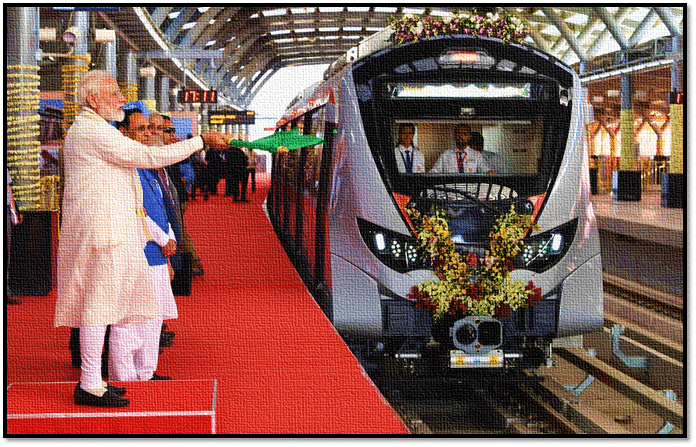India’s Metro Revolution: Transforming Urban Travel

India’s metro systems have revolutionized urban transportation, making travel faster, safer, and more efficient. With over 1,000 kilometers of metro lines spanning 11 states and 23 cities, millions of people now rely on these networks for their daily commutes. This remarkable growth has positioned India as home to the third-largest metro network in the world. The impact of these systems extends beyond mere transportation; they are reshaping how we live, work, and move within our cities.
A Leap Forward in Connectivity
On January 5, Prime Minister Narendra Modi made a significant announcement to enhance India’s metro network. He laid the foundation for several development projects worth over ₹12,200 crore in Delhi. Among these projects was the inauguration of the 13-kilometer stretch of the Delhi-Ghaziabad-Meerut Namo Bharat corridor. This new corridor will greatly ease travel between Delhi and Meerut, making it more convenient for commuters. Additionally, the Prime Minister launched a 2.8-kilometer stretch of Delhi Metro Phase-IV, which will benefit West Delhi. He also laid the groundwork for the 26.5-kilometer Rithala-Kundli section, further strengthening connectivity between Delhi and Haryana.
These initiatives mark a major milestone in India’s transportation landscape. The metro systems now cover greater distances and serve over 10 million passengers daily. In 2022, India surpassed Japan in the number of metro rail projects, solidifying its position as a global leader in this sector. Currently, India ranks third in the world for operational metro network length and is on track to become the second-largest metro network globally.
Historical Milestones in Metro Development
The journey of metro systems in India began decades ago. In 1969, the Metropolitan Transport Project was initiated, laying the groundwork for what would become a vast metro network. However, it took nearly two decades for the first metro line to become operational. The Kolkata Metro, which opened in 1984, was India’s first metro system and set the stage for future expansions across major cities.
Since then, numerous key developments have occurred. Cities like Delhi, Mumbai, and Bengaluru have seen significant investments in metro infrastructure. These developments have not only improved urban mobility but have also contributed to economic growth and reduced traffic congestion. The metro systems have become a lifeline for millions, providing a reliable and efficient mode of transport. Today, the extensive network connects various neighborhoods, making it easier for people to access jobs, education, and healthcare.
Innovations Shaping the Future of Metro Systems
India’s metro expansion has embraced innovative solutions that go beyond traditional land-based transport. The introduction of under-river tunnels, driverless trains, and water metros showcases India’s commitment to modern urban mobility. One of the most notable advancements is the under-water metro tunnel in Kolkata, inaugurated in 2024. This tunnel, which runs beneath the Hooghly River, highlights India’s engineering capabilities and sets a precedent for future projects.
In December 2020, India launched its first driverless metro service on the Delhi Metro’s Magenta Line. This innovation has set a new benchmark for automation in public transport, enhancing safety and efficiency. Additionally, Kochi became the first city in India to introduce a Water Metro Project, connecting ten islands around the city with electric hybrid boats. This initiative ensures seamless connectivity and demonstrates the potential of integrating different modes of transport.
Moreover, the government has approved several new metro rail projects, including expansions in Bengaluru, Thane, and Pune. These projects aim to reduce road congestion and improve urban mobility, further solidifying the role of metro systems in India’s transportation landscape.
International Collaboration and Future Prospects
India’s advancements in metro systems have garnered international interest. The Delhi Metro Rail Corporation (DMRC) is currently overseeing the implementation of a metro system in Bangladesh and has offered consultancy services in Jakarta. Countries such as Israel, Saudi Arabia, Kenya, and El Salvador are exploring collaborations with DMRC for their metro development projects.
As India’s metro network continues to expand, it sets new standards for urban mobility and sustainable development. The integration of advanced technologies and innovative solutions will play a crucial role in shaping the future of transportation in India. With ongoing projects and international collaborations, India’s metro systems are not just transforming urban travel but also paving the way for a more connected and sustainable future.
Observer Voice is the one stop site for National, International news, Sports, Editor’s Choice, Art/culture contents, Quotes and much more. We also cover historical contents. Historical contents includes World History, Indian History, and what happened today. The website also covers Entertainment across the India and World.

